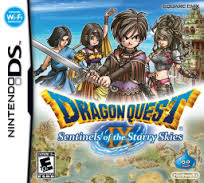Chris and I had our monthly (or semi-monthly or really whenever we can get together around our busy schedules as international men of mystery) nerd night last weekend. It involved the usual rounds of fighting games, attempting to survive round after round of Horde mode in one of the Gears of Wars games, and Magic: the Gathering. Magic featured a control v. control game that warmed the heart of this “Blue blood” player who is on record of saying that Pacifism is my favorite card in the game. There’s a reason that it borders my portrait in the banner.
As we were wrapping up and deciding when to get together again for another nerd night and maybe the opportunity to finally record the pilot show, we somehow got on the topic of unopened/unplayed video games. In addition to being an unabashed noob filthy casual gamer, I have also been a cheap gamer ever since I purchased my first console, a PS1, at full price only to see the price drop literally a year later. I have not paid full price for a console or video game (other than a brief and dark flirtation with Skyrim when it was first released…I was unemployed and needed companionship…don’t judge me!) and often troll the 5 or 10 dollar bins at stores to see what deals I can get.
He talked about getting into Castlevania games and buying a few of them and then not playing them. I recalled that as I was digging through my games to find some two player games for us to break from Magic for a half an hour or so, I found three games that I bought for really cheap and now sit in the plastic in a closet in the living room. I found Mass Effect and Mass Effect 3 at Walmart for 5 dollars each. I bought Fallout: New Vegas for 15 bucks after starting and really enjoying Fallout 3, but not finishing that one, either. That’s not even counting the aforementioned Skyrim that I bought and invested far too much time in initially and now sits in the same closet while my orc archer sits in his home in some village, all of his exploits surely forgotten by now or the dozens of Steam games that I don’t even remember buying because they happened during the euphoric fog of a Summer or Winter sale. I buy these games, play the hell out of them for a time, and then put them off to the side for the next new and shiny (at least to me, by the time I purchase them, they are at least a year old) toy. Sometimes, they don’t even make it out of the wrapper or get installed on the computer.
So, what is a working father of three with a writing habit on the side to do to combat this phenomenon? By the time the kids go to bed and I can play the games, Christine has either co-opted the television (though she’s been watching more upstairs in the bedroom lately) or I’m so tired and brain dead that all I can do is match three in Marvel Puzzle Quest or play Hearthstone with the other noobs at my level in Casual setting. Is there anybody else out there with this problem? How do you carve out the time necessary to enjoy the games that you’ve spent your hard earned money on? I’d like to hear your suggestions.



